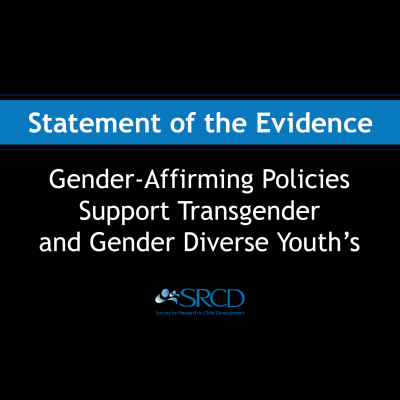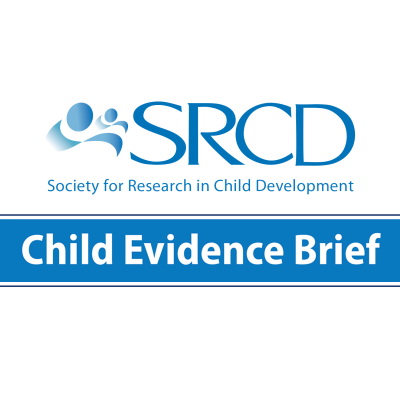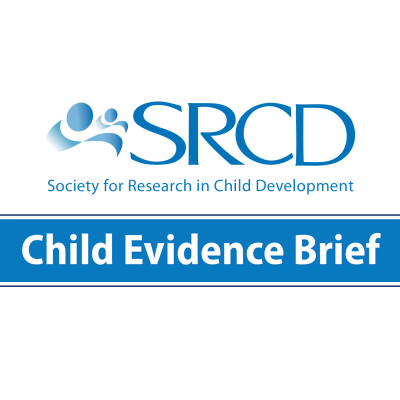School-Based Mentoring: Weighing Future Investments
Social Policy Report Brief, Volume 24, Issue 3
Why Does This Matter?
School-based mentoring programs aim to improve behavioral and academic outcomes as well as provide supportive relationships with non-familial adults. With so many school-based mentoring programs in place, and decisions about future funding being made, it is important to take careful account of the available evidence regarding their effectiveness and to understand which program features are associated with the strongest effects.
Future decisions about school-based mentoring programs should focus on the specifics of program approach and implementation because the benefits to youth may vary substantially.
Policy Implications
A thorough analysis of the findings of three recent large-scale evaluation studies of school-based mentoring programs along with other supporting research suggests that policymakers can focus resources on school-based mentoring programs with the strongest evidence of effects by funding those programs that:
- Use a clearly defined program model with well articulated standards for practice
- Provide ongoing monitoring and support so that program models are implemented with fidelity
- Ensure that all eligible students are matched with appropriate mentors
- Enlist adult mentors rather than older student mentors, whose effectiveness is not yet clearly established
- Are structured so that mentors and mentees meet consistently and are supported in developing mentoring relationships that can be maintained.
Although this analysis does not show evidence of effects on academic achievement, there are effects on outcomes that are important influences on student learning and resilience in at-risk youth. Outcomes from school-based mentoring in decreased truancy and school misconduct may contribute to improved academic achievement over time, but this has yet to be examined.
What the Research Says
- Three recent large-scale randomized control trials of school-based mentoring programs (Big Brothers Big Sisters of America, Communities in Schools of San Antonio, and the U.S. Department of Education’s Student Mentoring Program) report different results and conclusions.
- Comparing the results of the three reports illustrates the risks inherent in basing policy or practice decisions on individual studies without looking more broadly at available research.
- A new analysis combining data from the three evaluations found that, overall, these programs had modest effects in decreasing truancy, school-related misconduct and absenteeism; and in increasing participants’ reports of relationships with supportive non-familial adults, their perceived academic abilities, and peer support. The programs were not effective at improving academic achievement.
- Evaluations of interventions in schools focusing directly on academic skills or social and emotional learning have reported stronger effects than current school-based mentoring programs, which do not necessarily reflect these areas of emphasis.
- At the same time, effects for school-based mentoring programs are in areas that previous research indicates to be important for resilience among at-risk youth.
Facts at a Glance
- During the last 15 years, mentoring has become one of the country’s most popular interventions to improve the lives of disadvantaged and at-risk youth.
- The number of youths served by school-based mentoring in Big Brothers Big Sisters affiliates jumped from 27,000 in 1999 to 126,000 in 2006.
- Of the approximately 3 million adults who volunteered in formal mentoring programs in 2005, roughly one in four (29%) did so in school-based settings.
- In the typical school-based mentoring program, mentors and students may spend their time together doing homework, talking, or participating in games, arts, crafts and other activities.
- School-based mentoring developed when youth mentoring groups began partnering with school districts to provide mentoring in schools. Programs expanded amid a growing consensus that schools should be centers for social, psychological, and health services. The No Child Left Behind Act (NCLB) of 2001 put added pressure on schools to invest in programs that could improve academic outcomes as measured through testing.
- The Student Mentoring Program, first authorized in 2001 by NCLB, grew from a $17 million per year appropriation to approximately $50 million by 2004 and has since been eliminated.
This brief summarizes a Social Policy Report, "Review of Three Recent Randomized Trials of School-Based Mentoring: Making Sense of Mixed Findings," by Marc E. Wheeler, Adjunct Research Associate at Portland State University, Thomas E. Keller, the Duncan and Cindy Campbell Professor for Children, Youth, and Families with an Emphasis on Mentoring in the School of Social Work at Portland State University, and David L. DuBois, Professor in the Division of Community Health Sciences within the School of Public Health at the University of Illinois at Chicago.


